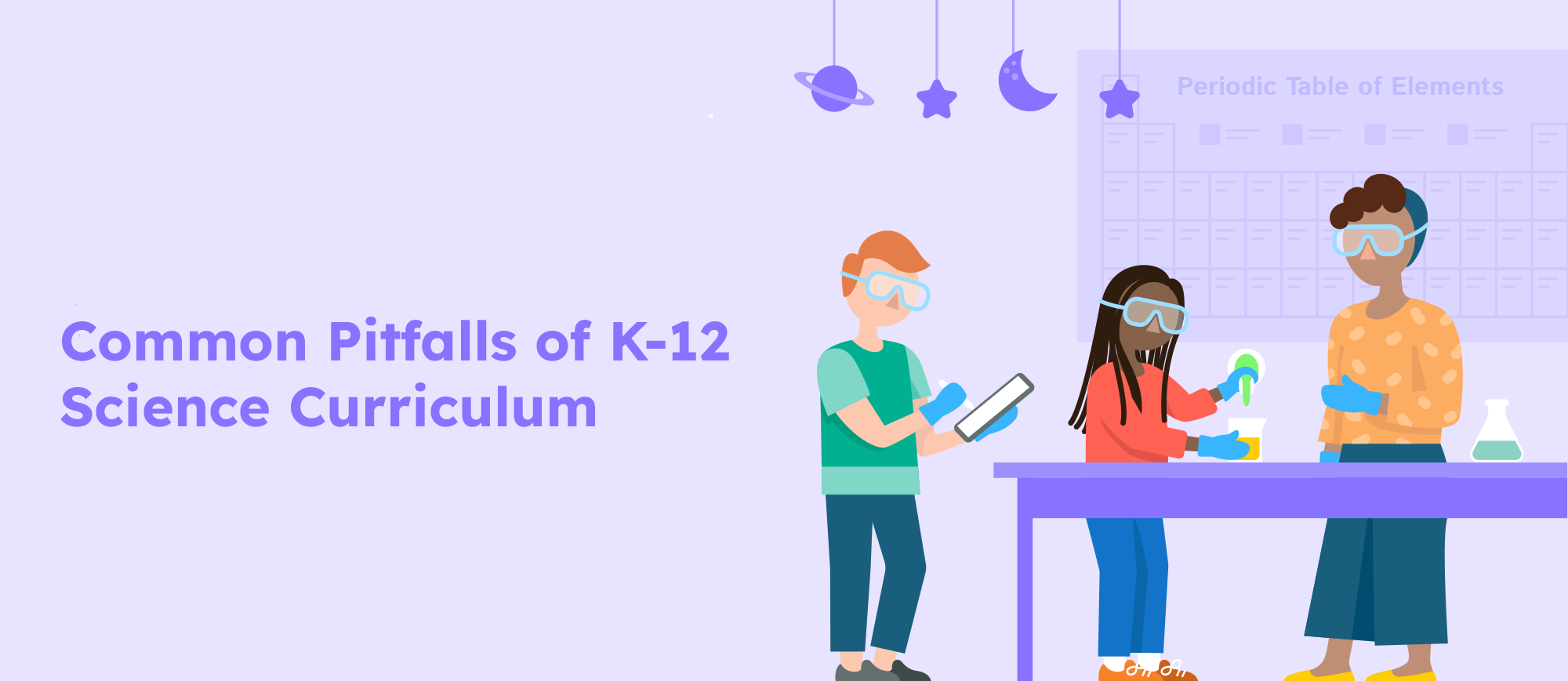
Zack Cronin
In the US, there are 3.5 million STEM and STEM-related jobs that will need to be filled by 2025, and that number is expected to grow by as much as 8.8%. But, a White House report found that 20% of high school grads are ready for the rigors of STEM majors, while a recent study found only 29% of students in Gen Z selected STEM as a major despite 75% expressing interest in those subjects.
Could this come down to a curriculum problem?
For K-12 science, the curriculum needs to not only be engaging, powerful, and captivating, but also effective, easy to use, and adaptable. Choosing the right educational materials that not only properly inspire students, but help them learn is one way to start solving the the STEM shortage we currently face.
Here are some common pitfalls to avoid when selecting and implementing a k-12 science curriculum, and explore how to avoid them, ensuring a smoother voyage toward enhanced science education.
Common Pitfalls in Choosing a K-12 Science Curriculum…
Lack of Alignment with Standards
First, ensuring that your science curriculum aligns with state or national standards is the bare minimum. Failure to do so can leave students with knowledge gaps and hinder their progress. By selecting a curriculum that adheres closely to standards such as the Next Generation Science Standards (NGSS), educators can ensure comprehensive coverage of key scientific concepts and skills. It’s also important to ensure adherence to your selected curriculum, so no gaps or inconsistencies are being created.
Insufficient Teacher Support and Professional Development
Teachers are the captains of the educational ship, and without adequate support and professional development, they may struggle to navigate the complexities of a new curriculum. Providing ongoing training, resources, and mentorship opportunities is essential to empower educators and foster effective implementation. Selecting a curriculum provider that includes professional development that is specifically aligned to the material itself is a powerful way to ensure that your educators use a curriculum to its fullest potential.
Neglecting Student Engagement and Diversity
Every student brings unique perspectives, experiences, interests, and learning styles to the classroom. Neglecting to consider this diversity can lead to disengagement and inequities in learning outcomes. Incorporating hands-on activities, real-world connections, and culturally relevant content can help make science education more accessible and inclusive for all learners. A phenomena-based curriculum (more on that later) is a great way for learners to share their own perspectives, encourage communication and discussion, and build critical thinking.
Overlooking Ongoing Evaluation and Adaptation
A curriculum is not a static entity but rather a living document that requires constant evaluation and adaptation. Requirements, policies, and student needs change. Your curriculum should not only be able to evolve along with them but be easy to adapt to fit the unique needs of your students.
Schools must prioritize ongoing assessment and feedback mechanisms to identify areas for improvement and ensure that the curriculum remains relevant and effective in meeting the needs of evolving student populations.
They should also select a curriculum that is easy to manage, edit, and improve upon. A digital curriculum is easily editable and can be adapted to fit any need that arises, in real-time.
Neglecting Phenomena-Based Learning
Phenomena-based learning serves as a beacon guiding educators toward more immersive and meaningful science experiences for students. By anchoring instruction around captivating phenomena that pique curiosity and inspire inquiry, educators can foster deeper understanding, critical thinking, and scientific literacy. From investigating the life cycles of plants to exploring the principles of buoyancy through hands-on experiments, phenomena-based learning opens the door to a world of discovery and exploration.
By avoiding common pitfalls such as standards misalignment, lack of teacher support, neglect of student diversity, and failure to adapt, we can navigate these waters with confidence and better prepare students careers in STEM. Through careful curriculum selection, ongoing evaluation, and a commitment to student-centered pedagogy, we can equip the next generation of scientists, engineers, and innovators with the knowledge, skills, and passion they need!
Kiddom seamlessly connects the most critical aspects of teaching and learning on one platform.
For the first time, educators can share and manage digital curriculum, differentiate instruction, and assess student work in one place. Learners can take assessments online, see student performance data with the click of a button, and teachers have the insight and tools they need to create individual learning paths.
Ready to bring digital curriculum to your school or district?
Connect with us in a 15-minute meeting to learn more about available pre-packaged curriculum and assessments, and how the Kiddom education platform can support your learning community.